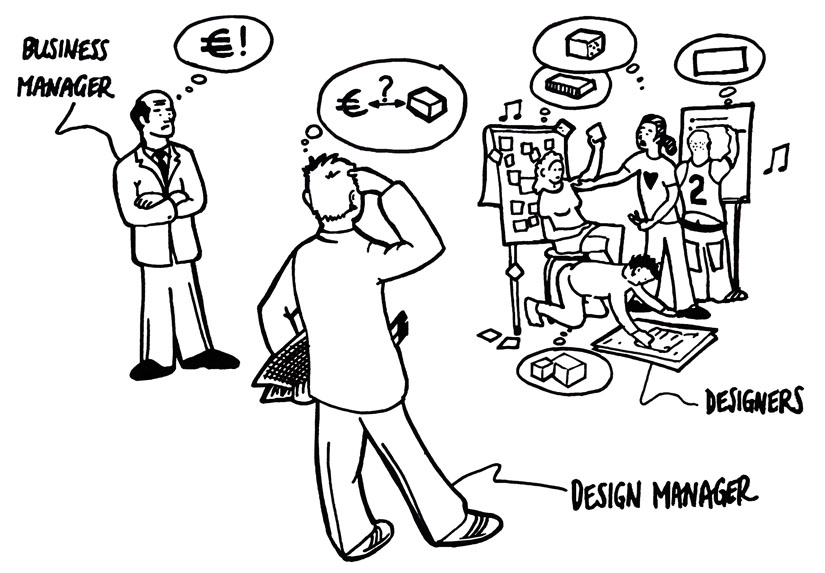The initial effort I discussed with regards to hacking arts management produced a core course in the UO Arts and Administration graduate curriculum, a course that ran for several years as the central portal through which students critically engaged practical and theoretical considerations about the relationships between emergent technologies and the diverse practices of arts management. Ongoing revision and refinement to our curriculum through faculty conversations driven by our observations on student needs, field expectations, and developing professional standards (via the AAAE) led to an initiative that has resulted in a more robust modification to the arts management education we offer. This hack, which I oversaw, resulted in a reconfiguration of four core courses into a two-course sequence—and capitalizes on multiple implicit overlaps and connections between previously distinct or siloed learning environments.
The problem, at first, stemmed from the significant number of credits our degree had in the “required course” (core course) category. The graduate faculty, as a whole, sought to reduce the number of required courses without diminishing (or discarding) important content: skills, critical thinking, etc. A plan emerged over the course of several meetings to attempt a merger across four existing courses. Two of these (AAD 584 & 585) comprised a sequence focused on developing skills in design and media creation, with an emphasis on web-based and social media tools that have become prevalent in the non-profit arts and culture sector. In these classes, students learned to work with digital creation and publishing tools (eg. the Adobe Creative Suite), became agile in the WordPress environment, explored video tools, and developed facility with the creation of logos, advertisements, and other visual collateral.
Another class in this mix was a graduate seminar in marketing for the arts. Historically, this course introduced students to issues and strategies central to arts and culture sector marketing, primarily focusing on nonprofit organizations. Students developed skills by generating a full marketing plan for an organization of their choosing. This plan would take shape over the ten weeks of an academic term, and would span several channels or communication strategies—often intersecting with the realms of media creation students had explored in the two-course sequence focused on design.
The fourth course in our curricular hack or mash up was the one I discussed in a previous post, “Media Management Praxis.” Emphasizing critical thinking and understanding of media in arts management, this course sought to establish skills in our students’ repertoire that would enable them to navigate the constantly shifting mediascape surrounding the practice of arts administration in the 21st century. As such, it represented a philosophical backdrop for the kinds of applied skills students developed across the three courses described above (two for media creation/design, and one for arts marketing).
In discussing how to merge the four courses, myself and my two colleagues who had been teaching the marketing and design courses sought to capitalize on both content and conceptual overlaps in order to build an efficient means for delivering essential training. That is, we knew from anecdotal evidence that students in previous cohorts had benefited from synthetic understandings that emerged across the four courses about communications and media use in nonprofit arts administration settings, but we also knew that we would have to cut some material from the ‘individual’ courses in order to distill these into a slimmer package (remembering that the initial ‘problem’ to solve here was a heavy required credit load for our master’s degree). In essence, we needed to develop a two course sequence that alchemized fourteen credits (from the four individual courses) into eight credits (the target across two “new” courses). This, then, was the object of our hack.
For the first run of the courses (Fall 2013 and Winter 2014 terms) we developed a twenty-week syllabus that positioned the fall and winter terms as two modules rather than as two distinct academic periods. Taking the primary assignments from the extant courses, we “disassembled” them into components and arranged them throughout the twenty-week schedule of this new two-course sequence now named “Marketing, Media, and Communications I & II“. The primary assignments at play were: 1. rebranding of an arts organization (including development of a logo and graphic standards through collateral, poster design, and web materials), the aforementioned marketing plan, and an essay exploring media use via a collectively-generated lexicon. Each of these assignments had historically lived in a course-specific environment (a syllabus, an academic term, an instructor’s style), and thus carried assumptions and requirements. These were more than what we typically think of as assignment requirements (eg. those things upon which an instructor assess the assignment), and we thought of them as the building blocks students would piece together toward skill development. In crafting our twenty-week syllabus, then, we took care in ensuring that we accounted for these building blocks (required knowledge or resources). As a group, the three of us distilled the essential skills and content students needed and then created scaffolded exercises and assignments that would build over time in an iterative manner, such that we would introduce students to a tool, the strategy for using it, and some ways to think critically about it with the goal of having them develop their facility with it across the three primary assignments. These assignments spanned the two academic terms and interwove with each other, with “pieces” of each manifesting within specific terms. It was hard to get away fully from the term-based notion of deadlines, as we were working within a structure anchored in assessing work and giving grades, so we had to pursue our hack accordingly.
Throughout the initial experiment, we continued to hack and modify by taking into account student feedback and our own emergent understanding of what we were doing (and what was working!). By threading marketing, design, media creation, and critical thinking through the twenty-weeks, we had intended to demonstrate to students how these were all connected and why a holistic approach would benefit them professionally once they move from the program into a career. For the most part we were succsessful, and the hack worked. We are now halfway through the second round of this effort, as the Winter 2015 course has just started. For this academic year, we shifted content around and hacked a bit more so as to make the experience useful and enjoyable for students. Upon wrapping up this term, the three of us will gather to evaluate the current structure and see what needs changing. After all, the ethos of hacking in many ways embraces the idea that nothing is ever finished…




